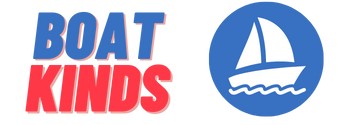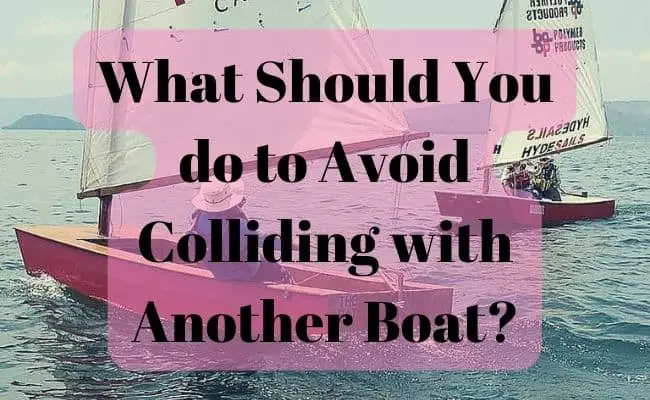What Should You Do to Avoid Colliding With Another Boat? On the water, you’ll have to be aware of other vessels and follow specific rules to avoid a collision. Give way to slow ships, maintain a constant speed, and avoid making sudden turns. Be aware of other boats and any obstacles in the water.
How You Can Avoid Colliding with Other Boats?
Knowing how to avoid colliding is an essential skill for the boat. You should always be on the lookout for other vessels and adjust your speed accordingly. This will reduce the chance of colliding by as much as 70%. Whether it’s a tight turn or a wide berth, you should always keep a safe distance from other boats. Knowing how to use a VHF radio and marine radio is also important.
The best way to avoid colliding is to plan ahead of time. If you are operating in an unfamiliar area, it’s crucial to monitor your surroundings. Look in all directions before you make a turn.
If you’re on the water at night, turn on your navigational lights. Also, adhere to the speed limits in the area. Breaking these limits will result in fines. Finally, be aware of any debris floating in the water.
Knowing boat terms and using them when communicating with other boaters is important. For instance, you should know which side is the port, starboard, and stern. This will help you communicate with other boaters clearly and concisely. You should also watch out for other boats’ movements and be prepared to take action if necessary.
Boat collisions can cause physical injury to boaters and property damage to docks and other structures. Always keep an eye out for other boats and signal your intentions if you see them.
Who is Responsible for Avoiding a Collision Between Two Boats?
If two boat is traveling in the same waterway at the same speed, they are both responsible for avoid colliding. This is called the rule of mutual responsibility. It requires both boat operators to take action promptly to avoid a colliding. It also requires boat operators to obey speed limits and local laws.
When a collision occurs, the operator of the inboard boat must shift its weight away from the other boat’s point of impact. This requires the inboard boat to go slower than the other vessel. It is also important to use sound signals and obey the capacity plate of the other vessel.
If one of the boats fails to follow the rules, the skipper of the stand-on boat is responsible for taking action to avoid colliding. In some cases, this means breaking the rules of navigation. This makes it important to be extra vigilant while navigating the waterways.
If the boat that has the right of way must reduce its speed to avoid colliding, it should do so on the right side of the waterway. It should also be visible to the other boat, which is called the give-way vessel. This rule applies in crowded channels, and the boat should always be on the right side of the channel.
If you are involved in a collision, it’s essential to report the collision to the authorities. The police will be able to document the accident and help exchange information with the other boat operator. Boaters should also take extra precautions in high-traffic zones.
What are Some Common Mistakes That Lead to Accidents?
When on a boat, there are many things to watch out for. You should always be paying attention to your surroundings, and try to avoid making mistakes that might cause you to be involved in an accident.
For example, you should never use your cell phone while on the water, unless it’s hands-free. Talking on a cell phone is like distracted driving, and it can cause you to lose concentration while you are in the water. Also, be aware of other boaters and the speed of their craft.
Here are some of the best ways to avoid colliding with boats;
- Keep a Safe Distance
- Use Common Sense
- Know your vessel and its capabilities
- Know the area you are operating in
- Watch for Vessels on the Starboard Side
What Are the Rules of Navigation for Boats?
There are many different rules and regulations about the safe and responsible operation of boats. Among the most important is the need to keep a proper lookout and use all available means. This includes a full appraisal of the situation, including the draft of the vessel about the depth of water.
Another important rule is that a vessel overtaking another vessel must give way to that vessel. This rule is particularly important during nighttime hours.
The rules about the right of way apply to both power-driven vessels and sailboats. The right of way is determined by position and direction, and there are different priority levels. The vessel giving way must confirm that it is a stand-on vessel and alter its course to give it the right of way.
How to Avoid a Two Power-Driven Vessel Encounter
A Two Power-Driven Vessel Encounter is a potentially dangerous situation in which the two vessels may not be able to avoid each other. To avoid this type of incident, vessels that encounter each other must keep clear of each other and make sure they are not too close. They must also be aware of each other’s course and avoid turning to starboard or port.
A Two Power-Driven Vessel Encounter is also called an overtaking situation. In this type of situation, the vessels are not as close to each other and maybe approach each other in a narrow channel. The overtaking vessel, therefore, should be aware of the other vessel and make the necessary maneuvers in sufficient time to avoid the collision.
Power-Driven Vessel and Sailboat Encounter
The rules for power-driven vessels also apply to sailboats and other vessels. In a crowded harbor, both vessels must give way to one another. For example, a power-driven vessel must move to the right of the sailboat and must give way to the slower vessel on the port side (left). A sailboat must give way to a fishing boat that is hauling nets.
Power-driven vessels should keep their engines ready for a rapid maneuver in limited visibility. If they encounter another sailboat or power-driven vessel at an end-on angle, power-driven vessels must alter course to starboard.
Two Sailboat Encounter
When two sailboats come into collision, the first rule of boat safety is to keep your distance. The best way to avoid collision is to adjust your course to avoid being in a head-on collision. During this time, you can use your compass to determine your course. It is also helpful to know the location of an object that is onshore and can help you determine your direction of motion.
If two sailboats are sailing on opposite sides, each must give way to the sailboat in front. If they are sailing in a narrow channel, the sailboat in the port direction must slow down and avoid a collision. It must also keep a safe distance from the sailboat in the starboard direction.
How to Use Sound Signals
Sound signals are used by boats to communicate with other vessels. These can be made with a whistle, air horn, or bell. Responding to a signal confirms that you understand the intent of the other vessel.
If there are two power-driven vessels within half a mile of each other, each must use a sound signal to communicate with one other. The initiating vessel must give a signal and the responding vessel must agree or disagree with the initiating vessel’s decision. Sound signals can be a crucial safety tool.
Sound signals are used for warning and maneuvering large vessels. They can also be used to avoid collisions by giving other vessels advanced warning. Both powerboats and sailboats must carry sound signal devices. These signals can be short blasts, or long blasts lasting four to six seconds. They can also be accompanied by light signals.
How Aids to Navigation Can Help?
One of the most popular aids to navigation is a buoy. These buoys are signposts that mark waterways. They are painted red and are on the right side of the channel. You should keep your vessel on the right side of the channel when approaching red buoys. Red buoys are even-numbered, while green buoys are odd-numbered.
Other aids include dashboards, which are diamond-shaped buoys that indicate your location. They are very similar to the “You Are Here” markings you find on building maps. A dashboard can be a very useful navigational tool, but you must use an appropriate nautical chart. The USCG has a list of different aids that you can use to keep your boat on the right course.
Red buoys are used to guide you toward the entrance of a harbor or to navigate upstream. They are often at the junction of navigable channels and indicate whether or not a channel is safe for your boat. The color of the top of the buoy indicates whether the water is safe for navigation. When red buoys are present, you should stay on the starboard side of your boat. You should also know that you may not be able to pass on both sides of a buoy.
Why do Boating Rules Matter?
When on a boat, knowing the rules is crucial for your safety. Following these rules ensures that you avoid collisions with other boats. The IMO rules specify a set of procedures for different types of collisions. Here are a few important rules to remember: When approaching another vessel, make sure you change your course and do not interfere with their course.
When approaching another boat, give the other vessel at least 100 feet of space. This will allow you to react in time. Also, always give way to emergency and law enforcement vessels. When approaching another boat, make sure to signal your intentions. When the other boater fails to do so, you may be required to alter course or yield.
If the other boat is traveling upstream, you must give them a lot of room. In addition, make sure to give your notice by steering to the right. If you cannot be seen by the other boat, use the VHF or CB to warn them of your approach.
Boating can be dangerous. Vessel accidents claim 613 lives each year and many of these were caused by violating simple boating rules. Boating safety is essential to keeping passengers and other boaters safe. By following a few basic rules, you can keep yourself, your passengers, and other watercraft safe and have a great time.

